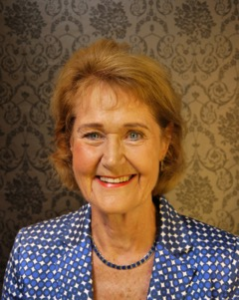
By Richard Gray & Elizabeth Howkins
(Biographies at end of post)
The Background
Stories help people make sense of experiences – their own and others. They can be a particularly beneficial way for participants to process difficult, confusing or painful experiences, and to share those experiences with others.
Digital stories are short, multi-media presentations, lasting only two or three minutes, and consist of still images, a voiceover, music and a simple narrative. The stories are told by real people about their experiences. The process of creating the stories results in a distillation: effectively the ‘essence’ of the story. The digital story format offers viewers and listeners a different kind of opportunity to step into the shoes of the storyteller and thus to develop empathy and cultivate greater compassion and understanding
The use of digital stories in interprofesional education (IPE) can be a way of helping participants to understand and reflect on the values of patients, carers and service users. The use of such stories told from the heart make a strong emotional impact on the listener and demonstrate how effective team communication can improve patient care. They ground the learning in practice.
Members of The Centre for the Advancement of Interprofessional Education (CAIPE) have over the years made frequent use of the extensive Patient Voicescatalogue of digital stories for their own work in promoting and teaching interprofessional education (IPE). The stories chosen provide examples of patient experiences, carer perspectives or a trigger to provide a powerful response in preparing a presentation to use in a workshop. Although the catalogue of digital stories addressed many health and social care issues, few specifically address and focus upon interprofessional education, interprofessional collaboration, or teamwork.
The CAIPE board agreed in 2018 to rectify this omission by funding and supporting the production of a series of interprofessional digital stories made by a group of CAIPE members. It was acknowledged that CAIPE members have a wealth of knowledge and personal experience to bring to digital stories that have the potential to enhance many aspects of IPE. The intention was for these digital stories to become a CAIPE resource and be placed on the website for members’ use in educational activities and for the marketing and promotion of CAIPE.
The Production of The Digital Stories
Nine members of CAIPE attended a residential creative workshop in Cambridge hosted by Patient Voices. Each participant came from a different background with different approaches and perspectives. Participants included a service user, a newly qualified practitioner, experienced practitioners, teachers involved in IPE and IPE leaders. Participants were requested to develop draft stories in advance of the event and during the workshop, worked not only on their own story but also supported other fellow participants in developing their stories. The group process, which was skilfully facilitated by four members from Patient Voices, involved reflection, creative writing, active listening to each other’s stories, sharing and discussing experiences and providing and receiving feedback.
Initially each participant developed their story which was then shared with the group. Through feedback and reflection each story was further developed and finalized and with IT help these were transferred into digital electronic format to be available on-line. Interestingly each of the nine digital stories produced was different from that developed in advance of the workshop.
A Summary of The Digital Stories
- New shoes
A medical scientist describes her story of transitional change with an insight into personal growth and professional development. Her story raises questions and challenges of the importance of learning to work with, from and about people from all walks of life, promoting interprofessional learning beyond the boundaries of social care.
- Offering
This story is about the work of a couple in supporting an interprofessional team to learn and teach others about the hitherto unfamiliar concept of palliative care and the practical aspects of its delivery in a low-resource African country (Tanzania).
- Taking time
A story of a medical-practitioner working in primary care that broaches the issue of stress and burnout in the workplace. It includes reflections from delivering clinical IPE and describes how these principles can be applied to improving teamwork in the primary care workforce
- Crying is not enough
A carer and IPE leader describes her struggle in finding help for her dying husband. She then links this experience with the challenges of introducing an IPE programme with its failures and successes.
- Me and the ocean
In her story a service user traces the challenging swim she is having in the ocean of life, the ocean of recovery with Schizophrenia, and the strong currents of an IPE initiative in mental health recovery for healthcare students to which it has given rise.
- Collective wisdom
An IPE leader reflects on the start of her journey to become a champion for IPE. She describes how she was able to observe medical, nursing and social work students bringing different perspectives to help address the needs of an older patient with co morbidities. The moment shines a light on learning “with from and about each other”.
- From discord to harmony
An IPE teacher explores the parallels of two stories; the first describes his experience of a challenging interprofessional teaching event involving social work and medical students. In contrast, the second story focuses on his experience of singing in a choir.
- The rhythm
An IPE leader and teacher illustrates experiencing the rhythm of learning and working together. In order to survive and care for your team members she needed to engage with this rhythm. When the tune changes, she listened to it, with an open-mind and tried to learn from it.
- And on the fifth day……
This story of a newly qualified doctor focuses on the transition period from pre- to post-qualifying and the importance of collaborative working. She finds herself in a leadership role for the first time and describes how she found support and advice from the ward team.
These stories can be accessed by CAIPE members on: www.caipe.org/resources/digital-stories
Impact.
In our experience, individuals working in senior positions in education and management can be under the impression, that they fully understand IPE and its related concepts. However we have found that this is not always the case, with their understanding of IPE sometimes being superficial and not always adhering to the strict CAIPE IPE definition.IPE needs a level of confidence to share, and learn from, with and about. Feeling confident in a professional role requires a level of vulnerability to stand in the shoes of others, to understand how this offers a different perspective , a richer picture and more accurate perspective These digital stories, grounded in personal experiences, have been used subsequently in educational events and have been found to provide powerful examples of IPE and collaborative working, facilitating effective discussion and promoting the importance of IPE and collaborative working
Conclusion.
These stories provide rich qualitative data that illuminate the experiences and values, hopes, fears, challenges and aspirations of the story tellers, giving CAIPE an IPE/collaborative practice resource that is effective, affective and reflective.
The residential creative workshop was best summarized by the following two comments made by participants:
“The process of the workshop and viewing of the stories enabled participants to share and understand one another’s values. This resulted in close team relationship between participants and an example of interprofessional working at its best.” (IPE teacher)
“In my life I have experienced many situations where people come together to make something but I have never felt such a strong sense of working with a group of people to explore their experiences, and as a group to support each other in crafting those experiences into stories. Stories that are affective. effective, reflective and extremely expressive works of art. As a community we made individual works of art that have come together as a stand alone work- a collage. Like a symphony- a piece of music made up of movements that are different, individual but related” (service user and IPE teacher).
Biographies:

Richard Gray: Honorary CAIPE Fellow and past CAIPE Chair
Richard Gray was CAIPE Chair 2013-17 and is a CAIPE Honorary Fellow. Richard is an Honorary Faculty Fellow, University of Brighton and past President of the General Practice with Primary Care section of the Royal Society of Medicine. He was a general practitioner in Brighton for over 35 years. He is Convenor of the Values Based Interprofessional Education and Practice Network at The Collaborating Centre for Values Based Practice, St Catherine’s College, Oxford.
 Elizabeth Howkins: Past CAIPE Chair
Elizabeth Howkins: Past CAIPE Chair
Elizabeth Howkins is an educational consultant working in the field of Interprofessional education and collaborative practice. She was the immediate past Chair of the Centre for the Advancement of Interprofessional education (CAIPE ).